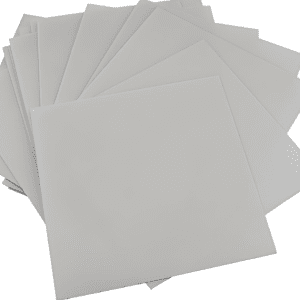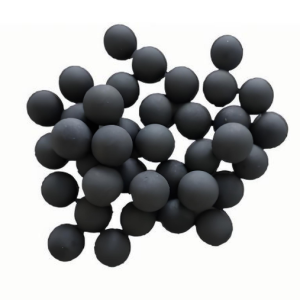Discover Premium Ceramic Products | Durability & Elegance United | Advanced Ceramics
Heat’s Worst Enemy: How Quartz Ceramic Fibers Are Changing the Game
(Application Breakthrough Of Quartz Ceramic Fibers In High-Temperature Thermal Insulation Materials)
Ever touched something incredibly hot? It hurts. Now imagine machines and vehicles facing temperatures ten times hotter than your oven, constantly. They need serious protection. That’s where an amazing material steps in: Quartz Ceramic Fibers. Think of them as the ultimate heat shield, incredibly thin yet unbelievably tough against scorching temperatures. This isn’t just minor progress; it’s a major leap forward for keeping things safe and efficient where the heat is on. Let’s explore this quiet revolution.
Main Product Keywords: Quartz Ceramic Fibers
1. What Exactly Are Quartz Ceramic Fibers?
Picture super-fine threads, thinner than a human hair. These threads are made almost entirely of pure silica sand, the same stuff used to make glass. But quartz ceramic fibers are special. They are spun into a wool-like material or woven into fabrics and boards. Unlike regular glass that melts easily, these fibers laugh in the face of extreme heat. They stay strong and keep their shape even when things get seriously fiery. They feel soft and flexible, almost like high-tech cotton candy, but designed for brutal conditions. Their key superpower is simple: incredible resistance to heat, far beyond what most materials can handle.
2. Why Do We Need Them? Heat is the Problem.
Heat is energy. Sometimes we want it, like in engines or furnaces. But too much heat in the wrong place is bad news. It makes metal parts weak. It can cause equipment to fail catastrophically. It wastes huge amounts of energy as it escapes. Older insulation materials, like certain bricks or mineral wools, hit their limits. They might crack under repeated heating and cooling. They might not insulate well enough at the highest temperatures. They can be heavy and bulky. Quartz ceramic fibers solve these problems. They handle much higher temperatures without breaking down. They are super lightweight. They trap heat incredibly effectively, stopping it from escaping or damaging sensitive parts. This translates directly to safer operations, longer equipment life, and less wasted energy.
3. How Are These Super-Fibers Made?
Turning sand into these powerful fibers is a high-tech process. It starts with very pure quartz sand. This sand is melted in special furnaces at extremely high temperatures, far hotter than melting regular glass. Think of it like super-heating lava. This molten quartz is then forced through tiny nozzles or spun using high-speed rotating wheels. As the molten quartz flies out, it stretches and cools incredibly fast, forming those ultra-fine, continuous fibers. Think of pulling molten sugar into thin threads, but way hotter and more precise. These fibers are then collected. They might be woven into cloth, needled into flexible blankets, or bonded together into rigid boards and shapes. The result is a material built from pure silica, giving it that unmatched resistance to heat.
4. Where Do Quartz Ceramic Fibers Shine? Real-World Applications
These fibers are finding homes anywhere extreme heat is a challenge. Look inside a jet engine or a rocket nozzle. Quartz ceramic fiber insulation lines the hot sections, protecting the metal structure from melting. Industrial furnaces used for making steel, glass, or processing chemicals rely on it. This insulation allows furnaces to reach higher temperatures more efficiently and last longer. In power plants, they insulate boilers and exhaust systems. The aerospace industry uses them to protect spacecraft during re-entry. Even your car might have some near the exhaust. They are crucial in foundries for handling molten metal. Essentially, if it’s hot, heavy duty, and needs reliable protection or efficiency, quartz ceramic fibers are likely playing a vital role.
5. Quartz Ceramic Fibers: Your Questions Answered
People often wonder about practical things. Are they safe? Generally yes, when handled correctly in their finished forms. However, raw fibers can be irritating, similar to fiberglass. Good manufacturers supply products with binders that lock the fibers in place, minimizing dust. Always follow handling instructions and wear recommended protective gear. How long do they last? They offer excellent long-term performance in high heat, far outlasting many alternatives. They resist thermal shock well, meaning they can handle rapid heating and cooling cycles without cracking. Are they expensive? Initially, they cost more than some older materials. But their longer lifespan, energy savings, and reduced downtime often make them cheaper overall. Can they get wet? While they resist water, prolonged exposure isn’t ideal. They work best in dry, high-heat environments. Can they be repaired? Damaged blankets or boards can often be patched using special high-temperature cement or by replacing sections.
(Application Breakthrough Of Quartz Ceramic Fibers In High-Temperature Thermal Insulation Materials)
This breakthrough in insulation isn’t just about handling heat; it’s about enabling progress. From flying higher and faster to making industries cleaner and more efficient, quartz ceramic fibers are proving indispensable. They are the unsung heroes working silently behind the scenes, making the impossible possible in our hottest endeavors.




